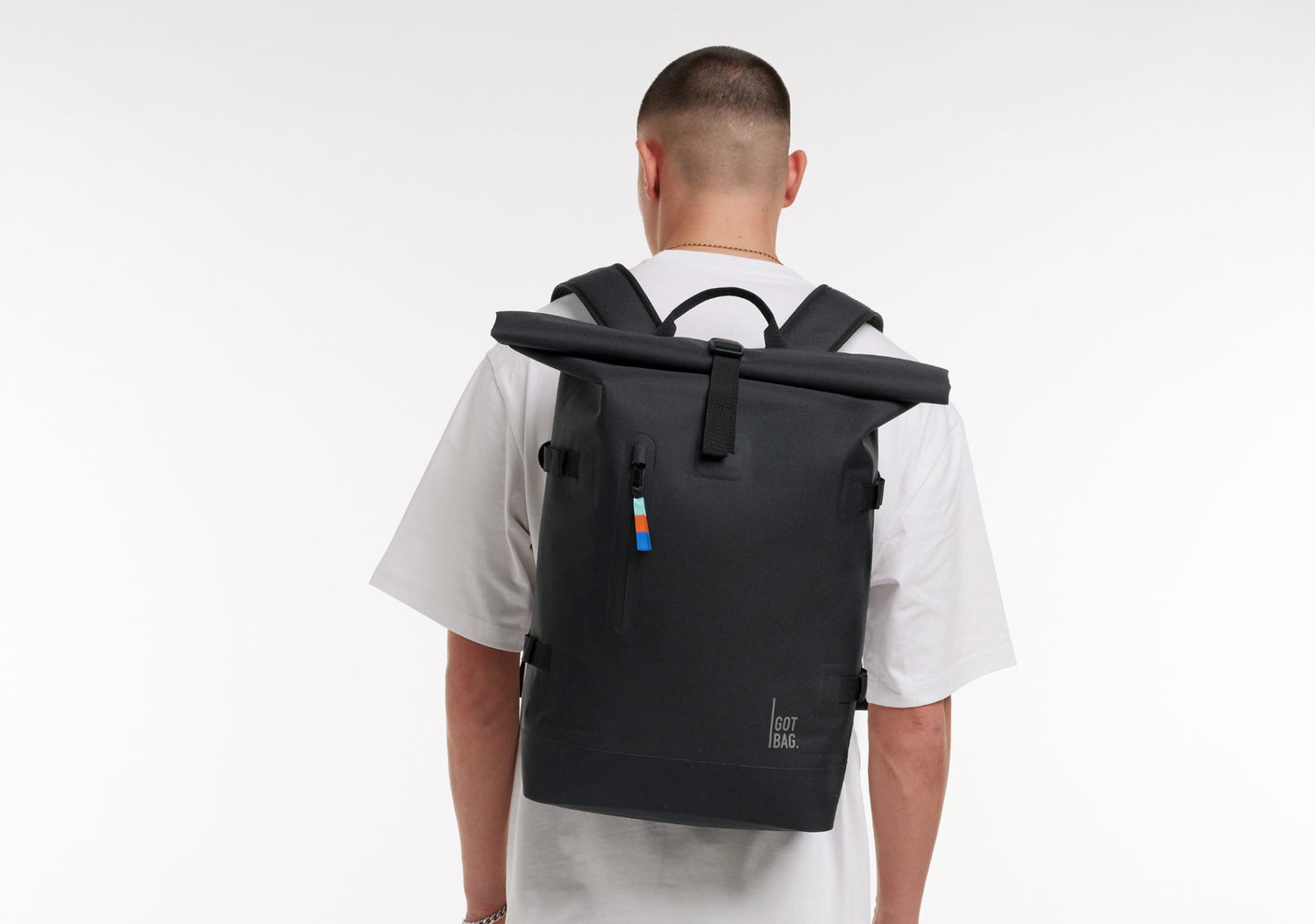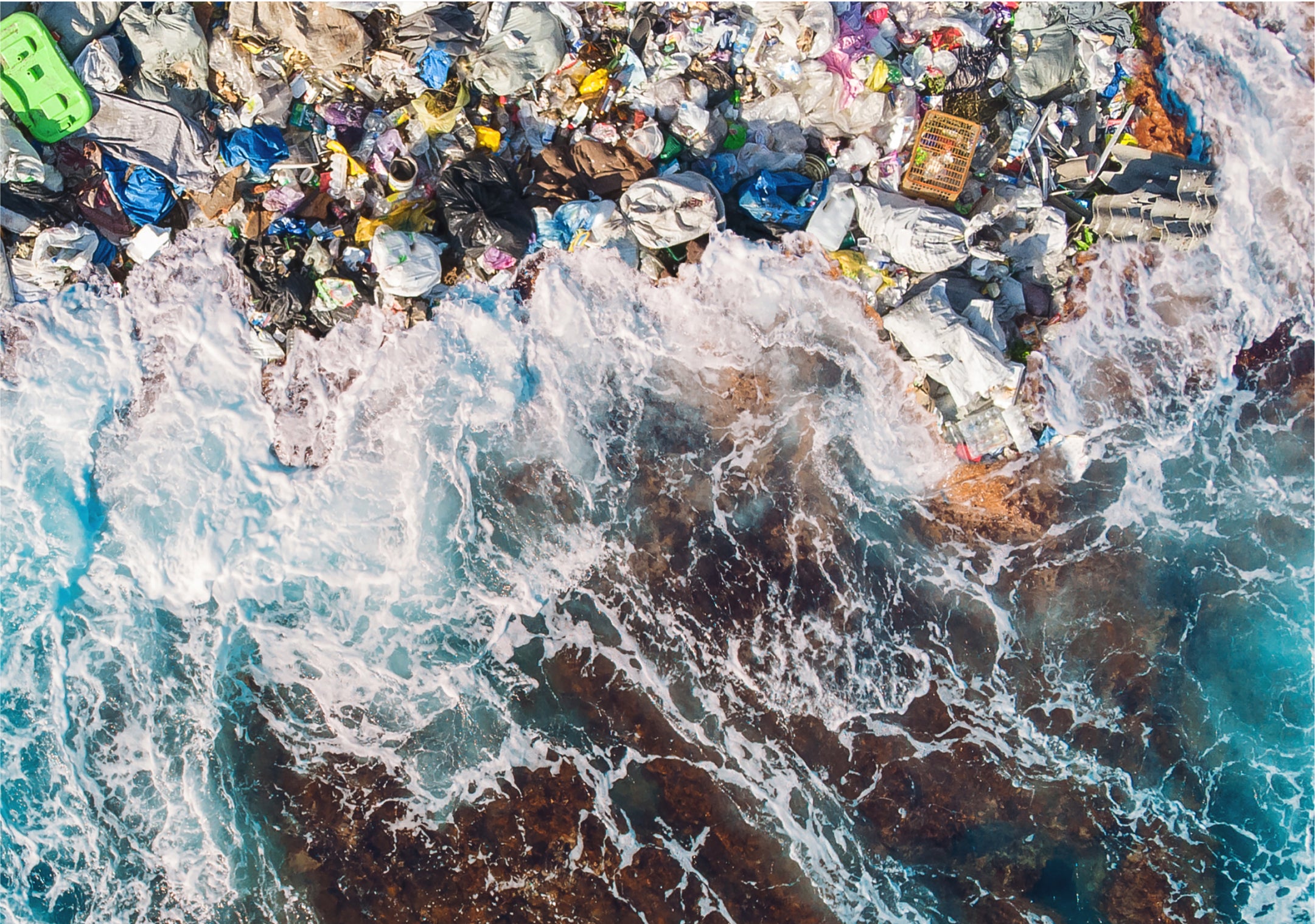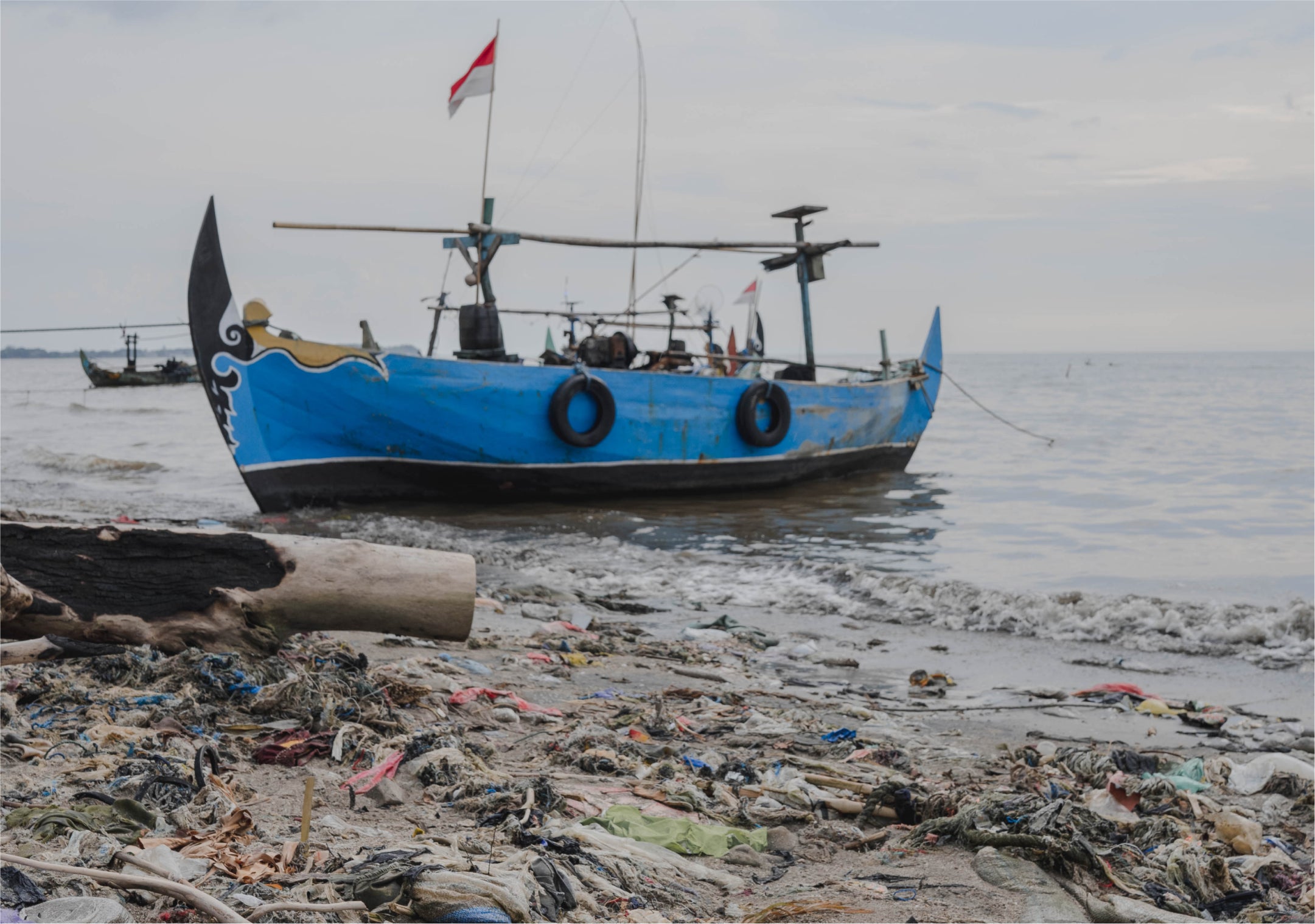A Life Cycle Assessment (LCA) enables the capture of the environmental impacts of a product, such as all greenhouse gases emitted from the extraction of raw materials to disposal. It serves not only as transparent information for consumers but also forms the basis for strategic measures to minimize a company's environmental impacts. We wanted to determine the impacts of the new ROLLTOP 2.0 in black and how they would compare if we produced it without any recycled content, using only new plastics. To this end, we collaborated with ConClimate GmbH to work on such an assessment in style of ISO 14044.
The assessment considered the entire lifecycle of the product - from the collection of plastic in our clean-up program, the production of the backpack, through to its transportation assuming a purchase in our online shop, and finally its disposal in Germany. Unlike clothing, our backpack does not need to be washed in everyday use, so we were able to exclude the use phase.
The impact of a product on global warming is expressed in units of CO2 equivalent (CO2eq), which consolidates all greenhouse gases, including carbon dioxide and, for example, methane, and is usually expressed in kilograms. For clarity, we divided the results of this scenario into the following categories: production processes, materials used, transportation, shipping packaging, and disposal at the end of the use phase.

Source: according to LCA study by ConClimate GmbH, 2024
The calculations show that using Ocean Impact Plastic and other recycled plastics leads to lower emissions at the material level. However, emissions from transportation and the production process are somewhat higher due to longer supply chain routes. Despite this, the overall balance for our ROLLTOP 2.0 is around 22% significantly lower than that of a hypothetical backpack without recycled content. While emissions are reduced, our products still have an environmental impact, which should be minimized as much as possible. This can only be strategically implemented after an assessment. To capture other environmental impacts, we've also accounted for metrics such as land and water use, and the eutrophication of seas. Find out more about the various environmental impacts of our backpack here.
What's next?
The Life Cycle Assessment provides a scientific basis for strategically minimizing the environmental impact of our products. As shown by the comparison to the backpack without recycled content, the use of recycled materials already contributes to reduced environmental impacts. However, as the LCA also points out, materials aren't the only factor. Therefore, the next steps for reducing environmental impacts will focus on production processes and the energy used in various production facilities.
Have questions, comments, or ideas? Email us at hello@got-bag.de









